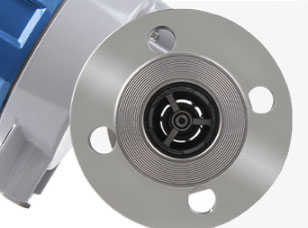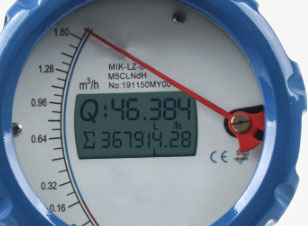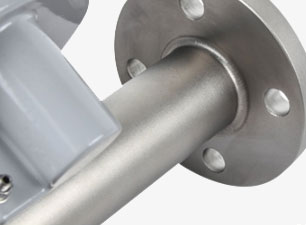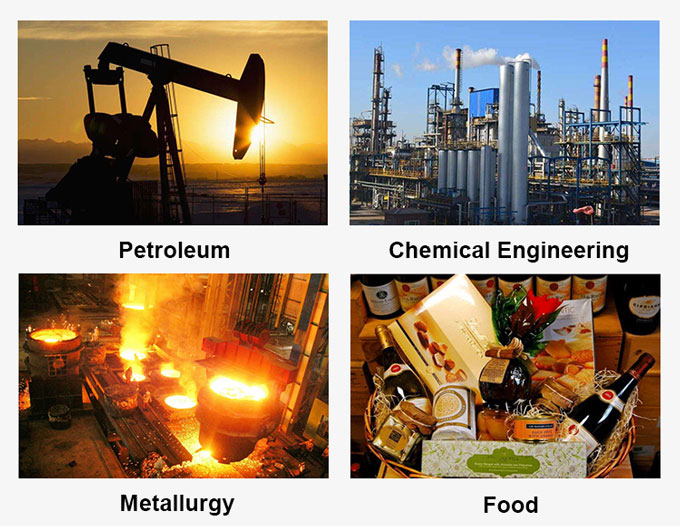Metal tube variable area flow meter provides repeatable and reliable flow measurement in demanding high pressure and high temperature applications, supports multiple output protocols, has data backup, power down protection, and can be used to detect the flow of liquids, gases and steam, especially for low flow rate and small flow rate media flow measurement.

All metal construction
- Stainless steel.
- Sturdy construction.
- performance can be stable.

The dual display dial design
- Dial design with both a two-line LCD screen and hands.
- Reading instantaneous and cumulative flow rates more clearly.
- Data backup, power failure protection.

Multiple connection methods
- Flange type
- Sanitary clamp type
- Ordinary thread type
- Sanitary thread type
Application
Metal tube variable area flow meter is used to continuously measure the volume flow of liquids and gases in closed pipes using the variable area measurement principle. There are local display type and intelligent remote transmission type, supporting a variety of output protocols, providing users with a very wide choice of space; in addition, the instrument uses an advanced 16-bit microprocessor and high-quality industrial components to ensure that the flowmeter in a variety of applications of excellent performance. Metal tube variable area flow meter is widely used in petroleum, chemical, power generation, food, water treatment and other industries.

| Model | SISCO-LZ-20 |
| Measuring Range | Water(20°C) (01-200000) L/h Air 20°C.0.1013MPa): (0.5~2000)m3/h |
| Range Ratio | Standard type 10:1 special type 20:1 |
| Accuracy Class | Standard type 1.5 class, special type 1 class, gas type 1.5 class |
| Pressure Level | Standard type: DN15~DN50≤4.0MPa DN65~DN200≤ 1.6MPa |
| High Pressure Type | Temperature range: -80°C~200°C, DN15~DN100≤10MPa |
| Connection Method | Flange type,sanitary clamp type,common thread type,sanitary thread type |
| Medium Temperature | Standard type -20°C~120°C PTFE 0°C~80°C, high temperature type 120°C~450*C low temperature type -80°C-20°C |
| Ambient Temperature | Remote type: -40°C~+70°C (LCD will not be damaged) LCD normal operation at -20°C~+70°C, local pointer type, local alarm type: -40°C~+80°C |
| Power Supply | Standard type: 24VDC 2-wire (4 20) mA (12VDC ~32VDC) |
| Alarm Type | 24VDC multi-wire (4 20)mA (12VDC~32VDC) |
| AC Type | (100~240) VAC 50Hz -60Hz |
| Battery Type | 3.6V@9AH lithium battery, can last for three years |
| Load Characteristics | RLmax: 600 Intrinsically safe: 5000 |
| Alarm Output | Upper and lower limit instantaneous flow alarm, optocoupler signal isolation Darlington tube output (internal 24VDC power supply maximum current 8mA. External power supply 250mA@36VDC) |
| Local alarm type: upper limit, lower limit or upper and lower limit instantaneous flow alarm Reed switch switch alarm (contact capacity 1A@30VDC) optional normally open and normally closed | |
| The upper limit and lower limit alarm hold range is up to 60% of the range, and the minimum interval between the upper and lower limit alarms is 10% of the range | |
| Pulse Output | The cumulative pulse output is an optocoupler signal isolated Darlington tube output (internal 24VDC power supply, maximum current 8mA) |
| Protection Class | IP65 |
| Intrinsically Safe Parameters | Ui≤28V li≤100mA Pi≤0.7W Ci≤0.021 μF Li≈0mH |
Q1: Can a metal tube variable area flow meter have perfect accuracy?
A1: In an ideal world, the flow readings from your process meter would be exactly correct, without any type of deviation. Unfortunately, this is not the case, and the errors inherent in measurement must always be identified, accounted for, and minimized as much as possible.
Q2: Does a metal tube variable area flow meter need to be calibrated?
A2: During the production of a flow meter, several steps are required such as coil winding, lining processing, and electrode assembly. This series of operations can cause a certain amount of error and dispersion in the device, so a calibration process is required to correct the accuracy.
Q3: Do metal tube variable area flow meters have temperature compensation?
A3: Yes. As long as these temperature variations are within the temperature compensation range, the output reading compensates for the temperature variations.
Tips: How does the Metal tube variable area flow meter work?
The metal tube variable area flow meter float is in the measuring tube. With the change of flow, the float moves upward, and the buoyancy of the float and the gravity of the float reach a balance at a certain position. At this time, the flow annulus area between the float and the orifice plate (or cone tube) remains constant. The area of the annular gap is proportional to the rising height of the float, that is, the rising position of the float in the measuring tube represents the flow rate, and the position of the changing float is transmitted by the internal magnet to the external indicator, so that the indicator can correctly indicate the flow value at this time. . This makes the indicator housing not in direct contact with the measuring tube, so even if limit switches or transmitters are installed, the instrument can be used under high temperature and high pressure working conditions.
Thank you for buying industrial test and measurement equipment on SISCO.com, all products sold by SISCO and the partner cover a 12 months warranty, effective from the date of receiving the products.
What is covered?
SISCO is responsible for providing free spare parts, and free technical support to assist the customer to repair the defective products until the problem is solved.
What is not covered?
- Product purchased from anyone other than a SISCO store or a SISCO authorized reseller.
- Expendable parts.
- Routine cleaning or normal cosmetic and mechanical wear.
- Damage from misuse, abuse or neglect.
- Damage from use of parts other than SISCO approved.
- Damage from use outside the product’s usage or storage parameters.
- Damage from use of parts not sold by SISCO.
- Damage from modification or incorporation into other products.
- Damage from repair or replacement of warranted parts by a service provider other than a SISCO authorized service provider.
- Damage caused by the application environment not meeting the product usage requirements and the failure to perform preventive maintenance.

